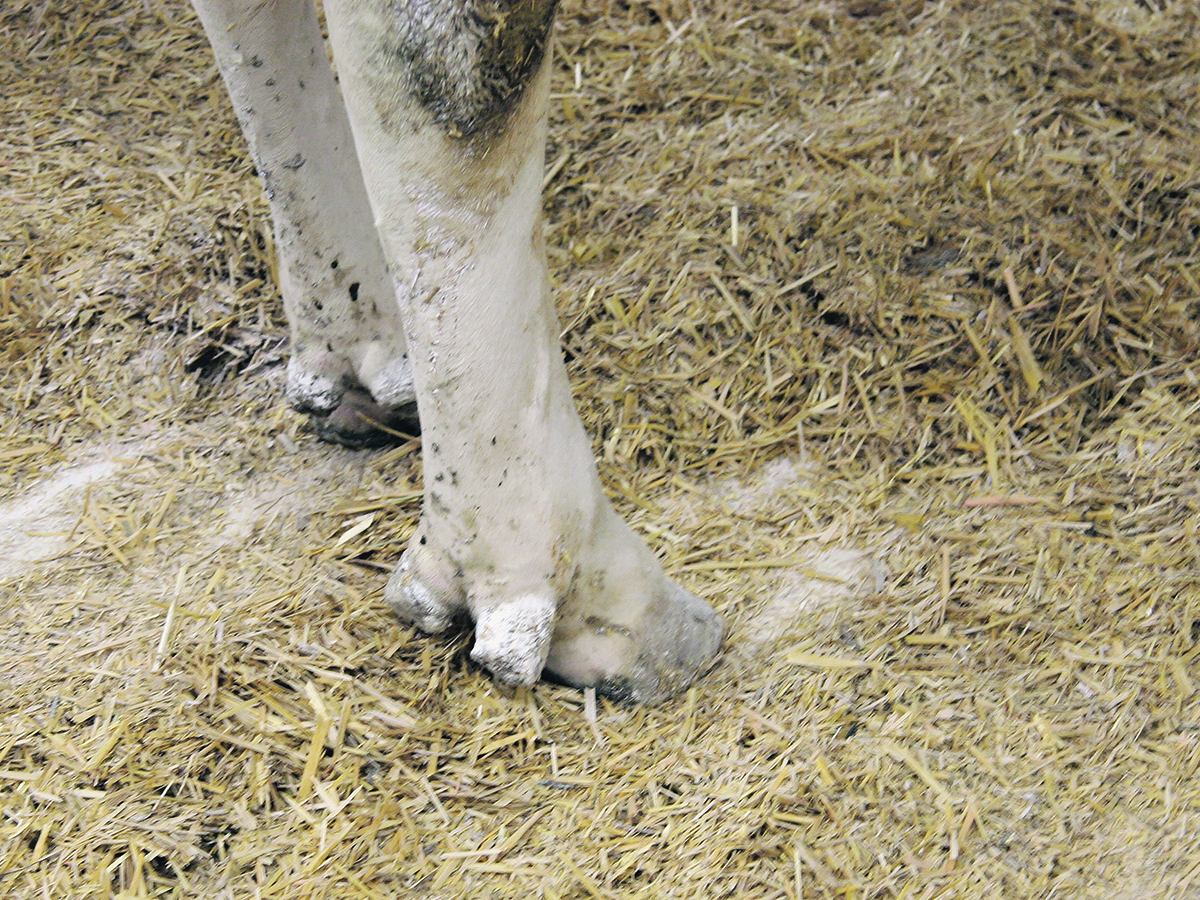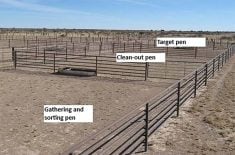In cow calf production, lameness is second only to reproduction for culling criteria.
It impacts all levels of the production cycle, and in the long term, it can become an animal welfare issue.
Cow-calf producers must prevent and treat lameness and provide an area with feed and water close by where convalescence can occur.
Read Also

Beef cattle more prone to trace mineral deficiencies
The trace mineral status of our cows and calves is a significant challenge for western Canadian producers and veterinarians.
If slaughter is required, it is important to determine if the lame animal is fit for transport or whether on-farm butchering will be necessary on an emergency basis.
Feet and legs are one of the main criteria used when selecting bulls and females for breeding. They are low to moderately heritable, but it still makes a difference, so be selective on that end.
The choice of where cattle are pastured is beyond a producer’s control, but swampy land or forcing cattle to wade into water sources can lead to foot damage and injuries.
A lot of producers use solar pumps on pastures or remote watering systems, which give cattle lots of space to water.
These improvements not only reduce lameness but also make it possible for cattle to do better.
There is no question that more cattle do need a preventive foot trim.
Pregnancy checking time is a good opportunity to assess the feet and collect a small pen of those animals that can benefit from a foot trim.
Lameness is caused by pain, in most cases, so cows won’t milk as well, which affects calf growth.
Herd bulls should be hoof trimmed or at least be considered for a trim a decent amount of time before the breeding season. Producers can’t afford lameness in their breeding bulls.
Lameness can be treated with a decent prognosis, but some cases will need more advanced surgery or medicine and others require emergency slaughter.
A number of lameness conditions always seem to crop up in the fall. The cows are close by and producers can observe them.
It would be great if they were sorted out and then looked at by either a veterinarian or a hoof trimmer.
Some animals need a good trimming to improve their condition and others may need surgical or medical intervention.
Producers then need a decent estimate of prognosis for functional recovery, and depending on the value of the animal, they can decide whether to proceed or ship for slaughter.
With heavily pregnant cows, the goal may be to have it give birth and raise the calf for a length of time. This is where animal welfare concerns are addressed and use of NSAIDs may be considered for a while.
It can be difficult to pinpoint the problem until the producer gets a close look at the animal, checks the foot and watches it walk.
We all know the too-common diagnosis of foot rot and cases where the toes are spread apart and there is swelling pain and a rotten area between the toes.
These cases respond well to antibiotic treatment, so it is likely something else if the animal does not respond to one treatment.
The biggest mistakes in the past have been treating broken legs and other severe cases of lameness with antibiotics and then being stuck with the withdrawal times.
In these cases, the decision to do emergency slaughter could be made before treatment. If the decision can’t be made immediately, there are some NSAIDs with very short withdrawal times that can possibly be considered in the interim.
It’s possible to use video and paperwork to get an ante mortem inspection done for emergency slaughter, put down the animal, bleed it out and then proceed to the plant, as long as an appointment is made.
This is how it can work in Alberta, but of course some plants are better equipped than others to handle these types of submissions, so check ahead.
With all the other lameness cases, I believe it would be best to gather them together and then use a tilt table or at least a good chute to restrain them.
They can be worked on in groups and from there they will have varied outcomes, from sole abscesses with often a complete recovery to septic arthritis, which may need a claw amputated or the joint fused.
With septic arthritis, both of these methods have a pretty fair prognosis, giving cattle a few more years of productive life.
Veterinarians could be doing more of these procedures, but they often are not presented with them or have access to a clipping table.
I know some feedlot veterinarians who do claw amputations, and the calf can do much better and reach slaughter weight, which is phenomenal.
More large feedlots have tilt tables now because the need is there to properly treat lameness.
There are ligamentous issues such as tears of the stifle (cruciate) or other location. Depending on the degree of lameness, the answer is to make the animal comfortable and provide good bedding and close access to feed and water until a calf is weaned or drugs are withdrawn.
There are other nerve impediments in which lameness is evident but no pain is involved. I call this functional lameness, and the animals can often be kept for a long time as long as it doesn’t lead to other conditions.
Lameness is not to be ignored, and treatment with segregation will lead to better outcomes in terms of performance and address animal welfare issues.
This involves working on individual animals and making individual diagnoses, but it can be very rewarding for both the veterinarian and the producer.
The value of today’s cattle more than warrants producers’ time, effort and cost.
Find a veterinarian that is interested in lameness and ideally has a tilt table at their clinic or has access to one. The same applies to hoof trimmers.
Those are key ingredients to a successful outcome.
Roy Lewis works as a veterinarian in Alberta.















